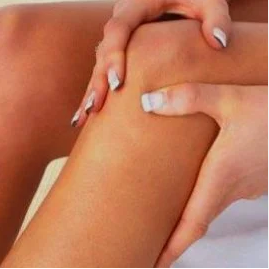
Knee pain and the symptom of a large problems that the signals in the body – the appearance of the disease of the joints or just the increase of the load on your feet.
And difficult to find a person who never experience pain in your knees in a certain period of life. The physical discomfort, clicking or pain in different intensity of the knee joints occur in children and adults due to many reasons. The older the person becomes, the greater will be the probability of destinations diseases, the first symptom of that and the knee pain. Due to This at the age peculiarities of the body: slowing down of metabolic processes, wear and tear of the cartilage, the adhesion of other problems with the musculoskeletal system, blood vessels, piegaro.
Because of the complicated structure of anatomically and many high structures experiencing loads, and often overloads, the knee joints are very vulnerable. Any damage to any element of The structure, for example, bursal, leads to the violation of the motor function of the knee and, consequently, pain syndrome. And Ligaments menisci considered are the most vulnerable, who are injured in the 80-85% of the cases.
The structure anatomical knee
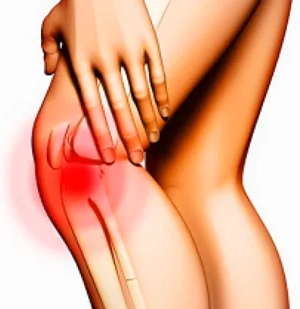
The knee comprises the knee joint, the distal end of the femur and two podmienkami condyles, tibial bones, muscles, piegaro, blood vessels, ligaments, patella (knee cap), the set of sacs and menisci.
The knee joint in one of the main joints of the body. At the top, the choice femur. The surface of The articulating lateral (outer) medial and (as a scholar) articulating condyles, with the patella and the tibia. Meniscus, that and a connective tissue cartilages serve as shock absorbers of the joint. Thank you, to the rational distribution of body weight on the plateau tibial increases l and d joint stability. Slim, dual-head, paliperidonesee other muscles sinhroniziruete capsular-ligamentous structures of the provision of motor activity of the knee joint.
The elements of the knee are connected by several ligaments. Within the set there are two cruciate ligaments – front and back. Podmyshalsky bedernau bones are connected to the tibia, the bones and ligament fibular collateral. The oblique popliteal ligament is located in the posterior part of the Bursa of the joint of the knee. On the basis of a number of the set of the main cavities secrete synovial capsule not communicating with the joint. The blood supply of the elements of the knee is due to the same of blood vessels, and innervation of nerve fibers.
Causes of knee pain
There are many causes of pain in the knee joints, which can be divided into several groups.
Traumatic injuries of the knee elements:
- Knee injury. As a result of the rupture of blood vessels produces local bleeding in the soft tissue of the joint. Redness, swelling, damage to the piegaro leads to pain, difficulty of movement.
- Total or partial rupture of ligaments. Often it is diagnosed violation in part of the integrity of the internal ligament lateral derivatives of the eversion excessive of the tibia outwards.
Outside of ligament and torn less than that of the internal. Due to This strong deviation of the tibia towards the inside with the exposed legs for example. Cruciate ligament inevitably accompanied by hemarthrosis.
The total rupture of two ligaments and often with damage associated with the joint of the capsule, tearing of the meniscus internal. This injury leads to excessive mobility of the knee joint, accompanied by intense pain, the intensity of which depends on the degree of rupture.
- Hemarthrosis of the knee joint – the leakage of blood in the joint cavity. Sometimes traumatic and non-traumatic nature. Traumatic hemarthrosis occurs when the meniscus ruptures, complete or incomplete rupture of ligaments, intra-joint fractures, contusions the knee region. Non-traumatic option of the un of the symptoms of the disease that is characterized by an object the enlargement of the fragility of vascular walls or the violation of the blood coagulation system. These include hemophilia, scurvy, and severe forms hemorrhagic diathesis. Accumulated in the joint cavity compresses the blood of the tissues, the interruption of the circulation of the blood in them. The un special pigment – hemosiderin – negative impact on the ligaments, cartilage hyaline, synovial bag, which leads to loss of its elasticity. Result of the submarine to joint Bursa inflammation and one of its fibres and the object the enlargement of the production of all fluids. The result of repeated hemorrhage becomes degeneration and joint destruction.
- Knee miniscope – the violation of the integrity of the menisci of the knee joint. In the form is damaged lateral meniscus outside, when the medial internal. This one of the most common, but difficult to diagnose injuries of the knee joint. In a situation of risk of the disease are not only athletes involved in the exercise charm, but a people also normal. The un meniscus tear can occur from a sudden movement unusual turn in the body, the exposed on the legs and a strong blow to the knee.
- Patellar luxation – un abnormal displacement of the kneecap. Trauma and diagnosed in no more than 0.7% of cases of total dislocation. Often occurs a dislocation of the external, rarely internal, very rarely or vertical torsional. In case of incomplete dislocation patella is determined in the lateral (outer) condyles, while the full outside of the condyle side.
- Fractures or Open closed of the knee joint, upper part of the leg bone or lower division bedernau bones. This type of injury, often combined with lesions of the tissues of the soft knee, bleeding mass that cause excessive movement in the knee in the region of its deformation.
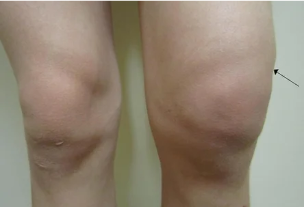
Inflammatory and degenerative-dystrophic joint diseases of the elements of the knee:
- Arthritis , inflammation of the knee joint. Similar Un development mechanism of the pathology observed in the osteoarthritis, ankylosing spondylitis, rheumatoid arthritis, arthritis, gout (the deposition urate ca of the joints).
- Osteoarthritis (gonarthrosis) with damage to the knee joint of non-inflammatory nature that affects all of its structure and serious that leads to degenerative changes.
- Bursitis inflammation of the synovial Bursa leads to pain during flexion-extension movements in the knee.
- Periarthritis of the tendons of the knee – inflammation of the capsule foot of the goose, the knee tendons and muscles and ligaments that surround the joint. The pain occurs while descending especially the stairs, especially with a heavy load, and is centrally located on the internal surface of the knee.
- The chondropathy patella , degenerative-necrotic changes of the articular cartilage (posterior) surface of the patella. The degree of destruction may be different areas of the lung smooth out the cracks and fill the abrasion.
- Chondromatous and a serious chronic disease caused by dysplastic process with the islet of regeneration of areas of the membrane " of the joint of the shell in the cartilage of gondrom. No offers excluding the separate ossification of the bodies cartilaginous.
- The un Baker's cyst – la formacio d a situation elastic, rounded tumor masses in the popliteal fossa, located on the side of the opposite patella. The cyst and clearly visible in the condition of the knee unbent. Causes physical discomfort, pain in the region popliteal. With a significant size compresses the blood vessels and piegaro, which leads to the interruption of the circulation and innervation, and of blood.
- Goff disease – a disease that accompanies the destruction and further degradation of the adipose tissue located around the joint of the knee. The pinching, swelling, lesions and other cell dl cells of fat – adipocytes the end of the replacement of a dense fibrous tissue. In the end, the buffer of the function "fat pad" is broken fatty tissue become not able to perform the role of shock absorber.
- Disease of Osgood–Schlatter – disease, characterized by necrosis, lumps the part of tibia. Diagnosed in adolescents 10 to 18 years involved in the sport. Below the kneecap lump painful appears in the absence of treatment leads to the restriction of movement of a leg or total immobilization, and malnutrition of the muscles.
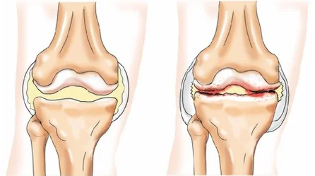
In the Diseases, the possible irradiation of pain in the knee region:
- Coxarthrosis hip of the – the chronicle of the injury, to the hip joint, accompanied by progressive deterioration and degenerative changes in her. Often the pain down are clean head to the outer surface femur to the knee or below.
- Neuropathy of the sciatic nerve and a non-inflammatory injury to the nerve as a result of the compression of the compression or spazmirovannah blood vessels. This nerve reaches to the feet, beginning in the lumbar region and passes through the coccyx and pelvis. The blockade at any point along leads to an alteration of the sensitivity or vibrant pain.
- Fibromyalgia – extra-joint injury the tissues of soft non-inflammatory nature with the totality of symptoms such as arthralgia, muscle weakness, depression, etc.
Some systemic diseases, which leads to a pain of the knees:
- Osteoporosis and a disease of the skeletal system, chronically progressive course, the change of the composition and minerals of the bone density. "Washing" of the bones of calcium leading to its fragility. The process was accompanied by pain, a pain or the limbs.
- Tuberculosis of the bones. Tuberculous lesions of the area of the bone at the door constant pain severe.
- Osteomyelitis and a disease infectious-inflammatory of nature that affects all the elements of the structural bones. The result of both specific, such as tuberculosis, and nonspecific, often coccal, osteomyelitis becomes in the redness of the skin, inflammation, pain local in the and the bones the muscles, febrile temperature.
- Some infectious diseases. When the syndrome Reiter, in addition to the involvement in the treatment of urogenital and eyes, affects the joints. One of the manifestations of Lyme disease and arthralgia.
The type of knee pain
Depending on the etiology of the nature and the intensity of the pain may be different.
- Pain. Arthritis, osteoarthritis.
- Spicy strong. Fractures of elements of the knee, ligament rupture, acute bursitis, knee injury, aggravation of miniscope, deforming arthrosis.
- Beats. When running deforming arthrosis, meniscus trauma.
- Drill. Osteomyelitis.
- Stupid. With bursitis chronic Legg.
- Cream. Original works of art of the compression of the sciatic nerve, tuberculous process in the bone.
- Shooting. With the pinch trunk of the nerve.
- Pain when walking. When the Baker's cyst, bursitis, arthritis, gonarthrosis, periarthritis.
- The pain alone. Gout, arthritis.
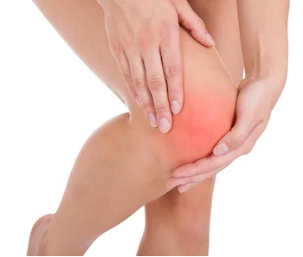
Diagnosis of the diseases that cause knee pain
Fizikalna review:
- medical history and claims;
- the un visual examination of the with palpation knee.
Lab test:
- biochemical and clinical analysis of blood;
- serological examination of blood;
- immunological analysis of blood;
- rheumatologic samples;
- bacteriological analysis of synovial fluid.
Invasive methods instrumentals:
- arthroscopy;
- puncture of joint capsule;
- needle biopsy of bone.
Non-invasive diagnosis:
- x-ray of the knee joint;
- densitometry;
- ultrasound examination of the joint;
- A magnetic RESONANCE imaging or computed tomography.
Treatment of knee pain
If the pain or the un two knees of the non-traumatic nature of their appearance, you should go to the primer therapist, who, on the basis of the complaints of the patient and the results of the objective review are forwarded to the un specialist – orthopedist, a rheumatologist, neurologist or phlebologist. In any knee injury, you should contact the or the surgeon traumatologist-orthopedist.
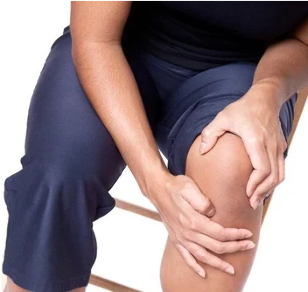
Treatment in each case and different, it depends on the cause of the pain, and say, the injury or illness. For each disease has its own treatment regime. But first the patient must observe some General rules:
- significantly reduce the duration of walking and being on your feet all day;
- temporarily athletes (wings of recovery) leave the formacio, and the people running running or jumping;
- when you increase the pain to completely leave the movement, putting it in the lock, knee bandages, elastic;
- bring un reinforcement or bandage to immobilize the knee joint;
- when the injury is cold to the place of trauma exposure.
Rheumatoid arthritis, psoriatic arthritis, systemic autoimmune diseases in serious need of comprehensive treatment for many months. Basic therapy consists of immunosuppressive drugs, nonsteroidal anti-inflammatory and hormonal drugs, gold preparations, etc.
In the treatment of bursitis the use of analgesics and anti-inflammatory medication. If there is evidence of infection, a course of antibiotics. Therapeutic puncture of the heads is carried out to remove the excess liquid from the cavity synovial and/or the administration of corticosteroids. Inflammation of the chronicle Of the Bursa helps to get rid of the surgery surgery, surgery of the bunion.
When deforming osteoarthritis-you intra-joint injections of corticosteroids, prolonged use of Aine, I chondroprotectors. For pain at a local level appointed compresses with Dimexidum, or, bischofite, gels, creams and with anti-inflammatory action. Help massage, physiotherapy, exercises therapeutic. Serious injuries require knee surgery – hip arthroplasty.
Treatment of osteoporosis and you pren bisphosphonates calcitonin, calcium, vitamin D, etc.
Treatment of meniscus tear can be conservative or surgical. Conservative therapy consists of use en l d analgesics, Aine, l ' hyaluronic acid, chondroprotectors. But first of produce to change the position of the joint.
Type of surgery:
- meniscectomy;
- partial (partial) meniscectomy;
- transplantation of the meniscus;
- arthroscopy;
- arthroscopic meniscus seams broken.
In any case of injury of the knee original works of art for a treatment of a very important period of rehabilitation, which should take place under the supervision of a physiotherapist of the un or podiatrist. The doctor optimal will make a recovery set of the function. Principles of The methods of rehabilitation are considered a postoperative massage and medical gymnastics. Also, a lessons-you on special simulators, a little a little development of the knee.












































